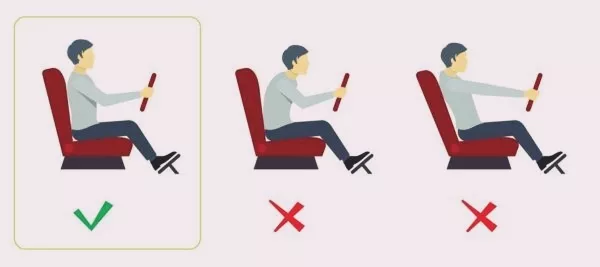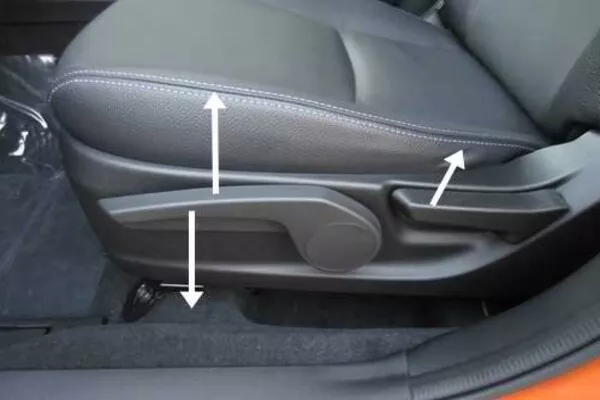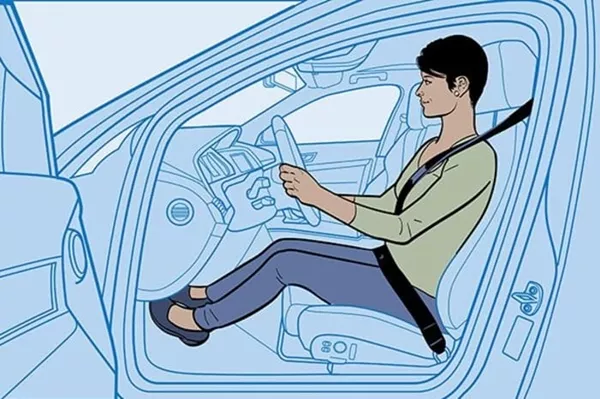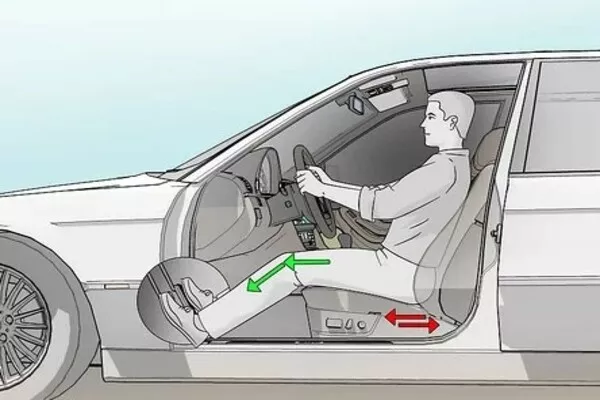Every day, automakers work to make vehicles more powerful, more comfortable and safer. But one thing that you can’t fully depend on automakers is having a comfortable back while driving. Read this article from Philkotse.com to know why good driving posture is important, and how you can improve it.
Jaguar's Guide to the Perfect Driving Position
1. Importance of correct posture
Correct posture is something that we often neglect and give little regard to. Not a lot of people give importance to its benefits and the bad effects of not doing it. Though it may seem hard to develop a habit of sitting with correct posture, you will eventually get used to it. Some of the benefits of correct posture include but are not limited to:
- Improved blood flow throughout the body. Ensuring a proper sitting position keeps the blood vessels and nerves healthy.
- Good posture also supports the tendons, ligaments, and muscles.
- Less back and neck pains.

Correct posture is something that we often neglect and give little regard to
>>> Check out: 3 simple tips for Filipino motorists to adopt a proper driving posture
2. What happens if you drive with an incorrect sitting posture?
Driving can prove to be a physically and mentally exhausting task, more so if you drive over greater distances or for a longer time. The toll on your body will be greater, too. You may eventually experience tension building up in your shoulders, arms or even neck. Over time, this can lead to serious physical pain.
Aside from giving you an uncomfortable feeling, this can also bring negative effects to your health. Do you spend a lot of time sitting in poor posture and have been doing it for more than a year or so? Well, you may have experienced one or a few of the following:
- Lower and upper back pain from slouching for too long
- Painful and annoying foot cramps from poor in-car ergonomics
- Numbness from staying seated too long and not taking breaks
- Hand cramps that can be felt up to the fingers from driving with poor posture

Driving can prove to be a physically and mentally exhausting task
And if you think that’s all you’re getting after all that driving, wait until the long-term side effects kick in. There was an article published in Time Magazine in 2014 about this very issue. According to this, driving for long periods of time could eventually lead to one or more of the following health concerns:
- Raised blood pressure
- Raised blood sugar
- Increased risk of suffering from depression
- Elevated cholesterol levels
- Reduced happiness
- Increased anxiety
- Reduced quality of living

Driving can prove to be a physically and mentally exhausting task
Cutting the time you need to spend driving can help relieve your body. But regardless if you do cut driving time or not, learning the proper sitting posture can do wonders for you. It won’t only save you from pain and discomfort but even from severe conditions. One example of a severe and permanent condition is carpal tunnel syndrome. To avoid the issues we just mentioned, you can follow the suggestions we prepared below.
>>> Also check: 5 tips to correct your driving position to avoid back pain
3. Suggestion to have the correct driving position
Step 1: Adjust the height of your seat
Old driver seat designs aren’t height adjustable. These could only be moved forward and backward depending on the preferences of the driver. These types of seats were created for people with average height and build. The drawback is that not all people are of average build.
That’s why one of the most appreciated in-car innovations today is seat height adjustment. But how exactly do you know if you’re already positioned the seat at the right height and distance from the steering wheel? Here’s our tip:
- First, sit comfortably in the driver’s seat and place your foot on the vehicle’s brake pedal.
- Sit in a position just as how you would sit while driving.
- Check if there is still space between the seat and the back of your knee. The space left here should fit at least two of your fingers.
- Also, make sure that both your hips and knees line up in a straight line.
Some people drive with hips lower than their knees. This can cause discomfort and muscle strain. You may also experience pain in the knees, calves, and legs.

One of the most appreciated in-car innovations today is seat height adjustment
>>> Read more: 10 bad driving habits you need to discard right now
Step 2. Adjust the position of your seat
Cars these days give you multiple ways to adjust the seats. You can tinker with this to find out which position feels best for you.
- Seatback: The back of your car seat can be adjusted from resembling a clamshell to a horizontal line. Simply position your seat in between those two options where you best feel comfortable.
- Seat backward/forward: You can move your seat backward or forward depending on what you like. But keep in mind that while we’re aiming for comfort, you must not sacrifice control.

You can tinker with this to find out which position feels best for you
- Lumbar support: This feature isn’t universally available, so you can’t expect every car out there to have this. Lumbar support is simply an additional feature that serves as an adjustable part that can contour to fit the lower spine. If your car has one, you can get a more comfortable sitting position by adjusting this feature too. If your car doesn’t have lumbar support, you can make one for yourself. Just roll up a towel and put it against your seat.

Cars these days give you multiple ways to adjust seats
>>> You might concern: 3 driving habits that can cause cancer and other health problems
Step 3. Adjust the way your body is positioned
Now that you know how your seat should be, you should also learn how to position your body correctly. Here are brief instructions on how you can sit comfortably in your car while driving:
- Feet. Your right foot should still be able to reach for the gas and the brakes. Keep your foot resting on its heel and use the ball of your foot to step on the pedals. Avoid using your midfoot and your toes.
- Arms. You should always keep your hands on the steering wheel. When you’re driving, your elbows should be bent at a 120-degree angle.
- Hands. Before, the 10 and 2 o’clock hand positions were recommended for more comfortable drives. Now, it is said that drivers should position their hands at the 3 and 9 o’clock positions instead.
- Legs. As discussed earlier, keep your feet out in front of you. Also, align your hips and knees for a more comfortable sitting position.

You should also learn how to position your body correctly
Recent posts
- Safe driving tips: How important is stopping distance? Jan 08, 2020
- This is how you can prevent aggressive driving and road rage Dec 03, 2019
- Safe driving: 7 tips on how to stay safe around trucks Aug 16, 2022
- Safe driving: Top 10 tips to avoid headlight glare at night Sep 11, 2019
- Eating behind the wheel: Bad driving habit you should quit doing Jul 04, 2018












